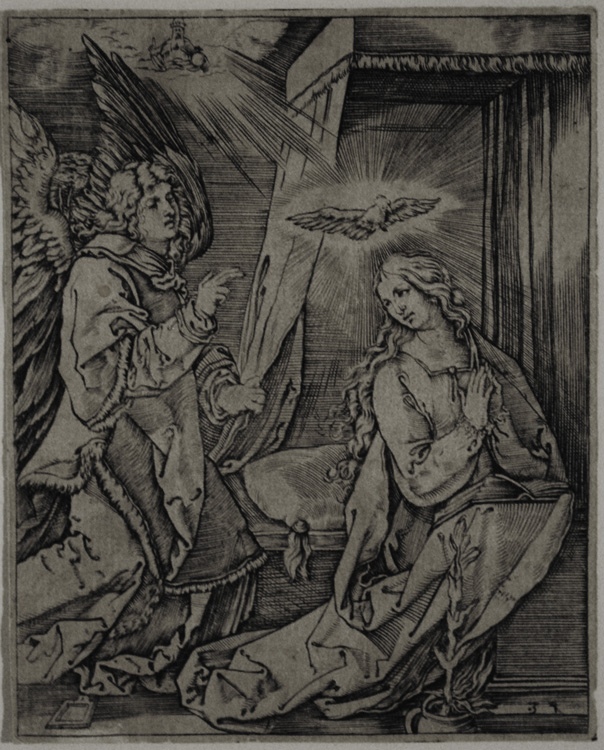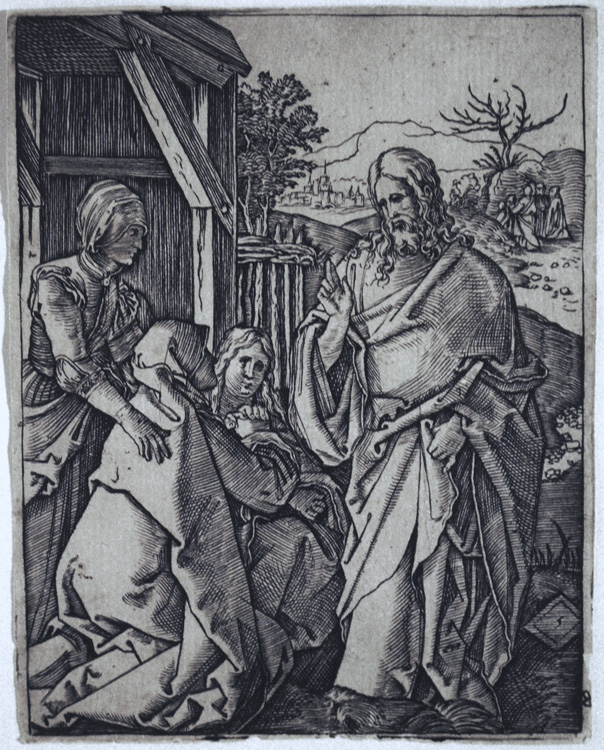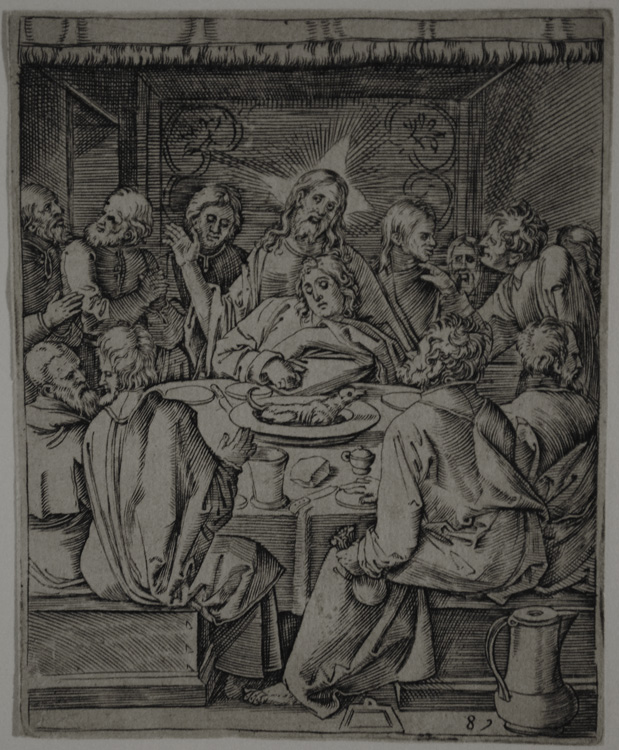Click image for BBB rating
See our Privacy Policy
cool="cool" width="802" height="7100" border="0" cellpadding="0" cellspacing="0" gridx="16" showgridx="showgridx" usegridx="usegridx" gridy="16" showgridy="showgridy" usegridy="usegridy" bgcolor="#99ccff">
|
|
|
 |
|
|
|
|
|
|
Welcome to Spaightwood Galleries, Inc.
120 Main Street, Upton MA 01568-6193; 800-809-3343; email: spaightwood@gmail.com
|
|
|
|
Marcantonio was the object of one of the earliest lawsuits by an artist against those appropriating his work as their own. As Giorgio Vasari (1511-1574) tells it in his Lives of the Painters, Sculptors and Architects, 4 volumes, trans. A. B. Hinds (London: Everyman's Library, 1970; the first edition was published in 1550, the revised version appeared first in 1568), 3: 68-86, Marcantonio discovered a set of Albrecht Dürer's Small Woodcut Passion in Venice, spent all of his money to purchase it, and proceeded, much to Vasari's disgust, to make engraved copies of each the pieces including Dürer's monogram. (Vasari makes it clear that he thinks everyone ought to be imitating Italians, not vice versa.) Dürer made a trip to Venice and complained to the Venetian Senate that Marcantonio was stealing his work and misrepresenting it (since Dürer had made woodcuts, not engravings). The Senate decided that since the images belonged to all of Christianity, Dürer could not claim ownership, but that his name belonged to him, and so it ordered Marcantonio not to use Dürer's monogram in his own works (3.71-73). Vasari seems to have gotten some of the details wrong—it was Dürer's Life of the Virgin that Marcantonio was publishing with Dürer's monogram, not his Small Woodcut Passion, which is never found in Marcantonio's engravings with the monogram—but the mistake is understandable, since Marcantonio did subsequently make engraved copies of the Small Woodcut Passion as well.
After leaving Venice, Marcantonio went first to Florence, then on to Rome, which became his home and where he found success working with Raphael as the head of a workshop of engravers (including Marco Dente da Ravenna and Agostino dei Musi (called Agostine Veneziano) whose copies made Raphael's work known through Europe. After Raphael's death from the plague in 1520, Marcantonio continued to work with the surviving members of Raphael's studio until the Sack of Rome in 1527, during which, according to Vasari, Marcantonio was taken prisoner and forced to sell everything he owned to ransom himself. Although his actual date of death, like his birthdate, is unknown, none of his works can be dated after 1527, and it is presumed that his death probably occurred soon after he was released from captivity.
Bibliography: There two volumes in The Illustrated Bartsch devoted to the work of Marcantonio and several more to his his followers. For modern criticism, see Evelyn Lincoln, The Invention of the Italian Renaissance Printmaker (New Haven, Yale University Press, 2000), Lisa Pon, Raphael, Dürer, and Marcantonio Raimondi: Copying and the Italian Renaissance Print (New Haven, Yale University Press, 2004), Innis H. Shoemaker and Elizabeth Broun, The Engravings of Marcantonio Raimondi (Lawrence KS: Spencer Museum of Art, 1981), the catalogue of a show that travelled from the Spencer Museum of Art to The Ackland Art Museum at The University of North Carolina.
In the pages that follow, we are happy to present 35 of Marcantonio's 36 engravings after Dürer's Small Woodcut Passion. All are in generally good condition, all generally have either thread margins or are cut on or just within the platemark. The plates represent typical early sixteenth-century aesthetics: sharp with a tonal range on the dark side (with a very few specified exceptions which are more richly printed); in order to accurately reproduce these plates, I had to print these as colored, not black and white, using the saturation control to match the color range of the originals. The set was clearly popular. The Illustrated Bartsch notes 3 states: State 1: the cartouche empty, no numbers elsewhere; State 2: the cartouche empty, one or more numbers outside the cartouche; State 3: the cartouche has a number in addition to the numbers outside the cartouche, often not agreeing. As one of the most important of the early 16th-century Italian engravers and a pioneer in running a large workshop that put itself at the service of one of the greatest master painters of all time, Marcantonio anticipates the great master printers of our own times like Stanley William Hayter and Kenneth Tyler. He is also a great engraver in his own right. At the moment, his prints are drastically undervalued, but we feel that his work needs to be known to understand the traffic in images in the Renaissance.
|
|
|
|
|
|
|
|
|
 |
|
The Fall of Man (Bartsch 585 iii/iii). Engraving after Dürer's Small Woodcut Passion, c. 1512. Good impression on laid paper with thread margins; "1" in cartouche lower right. Image size: 127x99mm. Price: SOLD.
|
|
|
|
 |
|
The Expulsion from Paradise (Bartsch 586 i/iii). Engraving after Dürer's Small Woodcut Passion, c. 1512. A Very rich impression of the first state on laid paper with thread margins; cartouche empty, no number at bottom of print. Image size: 126x99mm. Price: Please call or email for current pricing information.
|
|
|
|
 |
|
The Annunciation (Bartsch 587 ii/iii). Engraving after Dürer's Small Woodcut Passion, c. 1512. A very good impression on laid paper with thread margins. cartouche empty, numbered "3" and "4" lower right. Repaired paper loss at lower left margin. Image size: 123x99mm. Price: Please call or email for current pricing information.
|
|
|
|
 |
|
The Nativity (Bartsch 588 iii/iii). Engraving after Dürer's Small Woodcut Passion, c. 1512. Good impression on laid paper with thread margins. "5" in cartouche lower left; "4" lower right at bottom of print. Image size: 125x97mm. Price: Please call or email for current pricing information.
|
|
|
|
 |
|
Jesus' farewell to his mother (Bartsch 589 iii/iii). Engraving after Dürer's Small Woodcut Passion, c. 1512. Good impression on laid paper with thread margins. "5" in cartouche. Irregularly trimmed at bottom of print. Image size: 126x100mm. Price: Please call or email for current pricing information.
|
|
|
|
 |
|
Jesus' entry into Jerusalem on Palm Sunday (Bartsch 590 i/iii). Engraving after Dürer's Small Woodcut Passion, c. 1512. A very good impression of the first state on laid paper with thread margins. Cartouche upper right empty. Irregularly trimmed at top of print. Image size: 128x100mm. Price: Please call or email for current pricing information.
|
|
|
|
 |
|
Jesus driving the moneychangers from the Temple (Bartsch 591 i/iii). Engraving after Dürer's Small Woodcut Passion, c. 1512. A very good impression on laid paper with thread margins. Cartouche empty, numbered "7" lower right. Image size: 132x100mm. Price: Please call or email for current pricing information.
|
|
|
|
|
 |
|
The Last Supper (Bartsch 592 ii/iii). Engraving after Dürer's Small Woodcut Passion, c. 1512. Good impression on laid paper with thread margins. Cartouche empty; numbered "8" and "7" lower right by pitcher. Image size: 125x101mm. Price: Please call or email for current pricing information.
|
|
|
|
 |
|
Jesus washing St. Peter's feet (Bartsch 593 iii/iii). Engraving after Dürer's Small Woodcut Passion, c. 1512. Good impression on laid paper trimmed on or within platemark. "9" in Cartouche, "10" lower right. Image size: 125x96mm. Price: SOLD.
|
|
|
|
|
Spaightwood Galleries, Inc.
To purchase, call us at 1-800-809-3343 (1-508-529-2511 in Upton MA & vicinity) or send an email to spaightwood@gmail.com. We accept AmericanExpress, DiscoverCard, MasterCard, and Visa.
We also accept wire transfers and paypal.
For directions and visiting information, please call. We are, of course, always available over the web and by telephone (see above for contact information). Click the following for links to past shows and artists. For a visual tour of the gallery, please click here. For information about Andy Weiner and Sonja Hansard-Weiner, please click here. For a list of special offers currently available, see Specials.
All works are sold with an unconditional guarantee of authenticity (as described in our website listing).
Go back to the top of this page.
Visiting hours: Saturday 10:00 am to 5:00 pm and Sunday noon to 6:00 pm and other times by arrangement.
Please call to confirm your visit. Browsers and guests are welcome.
|
|
|
|
|
|
|
|
|
|
|
|
|
|
|
|
|
|
|
|
|
|
|
|
|
|








